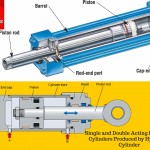In the quest to deliver on customers’ needs and expectations, call centres often rely on technology to offer impeccable call centre solutions. Nowadays, an increasing number of call centre service providers are making use of technologies that enables them to offer click-to call and virtual queuing option and techniques that enable their call centre executives to call-back. People often get confused between these offerings of call centres as they are closely associated with each other and are difficult to differentiate.

In this blog, we will explore the above mentioned three call centre solutions and clear the air surrounding them that gets people confused.
Call-Back
You must have faced numerous occasions when you are in midst of a meeting and you receive a call that you have to answer. There is quite high probability that in such scenario you do what other most people would do; you will pick up the phone and answer, “Hi. I am in midst of a meeting. I’ll call you back in 10 minutes.” In this scenario call-back is used for a “person-to-person call”; however, in the context of a call from person to a company, call-backs take several different forms. The common point among all those forms is that in every scenario it would be a company or business that would be calling back the person.
There are different reasons for organisation to offer its customers call-back solution and two of them are:
- Cost efficiency: Organisations need to pay a certain amount to avail toll-free number facility, which means they end up paying a certain amount as they answer calls that land on their toll-free number. Call-back solution allows a business organisation and service providers offering call centre solutions to make relatively inexpensive outbound calls to customers.
- Virtual Lines: Companies know that customers don’t like to wait. The option to call-back allows companies to reach customers at some later time instead of keep them waiting on hold. Thus, this call centre solution allows companies to make the use of virtual lines.
Click-to-Call
While a call-back can be arranged by multiple methods, like a customer can directly request for a call-back or he can be prompted by the IVR to select the call back option or he can arrange for call-back by clicking the call-back button on the website or mobile application of the company; a click-to-call is a call-back that is always initiated by clicking the button on website of the company.
People find the term click-to-call ambiguous as its literal meaning different from what it wants to convey. Ideally, it should be “click-to-arrange-for-a-call-back”.
Virtual Queuing
Of the three different terms that are being discussed in this blog, virtual queuing is implicit. The service providers that offer call centre solutions uses this term to the process of eradicating hold-time by arraigning for a call-back. The concept of virtual queuing has been making rounds in the industry for the last 15 years or so. It is same as the token system that we see around in banks; the only difference being that it is a phone-based solution.
Call centre solutions providers use virtual queuing to minimise hold time. Virtual queuing is always followed by a call-back; however, a call-back does not require virtual queuing. It should also be noted that not all virtual queuing scenarios embroils the use of click-to-call. One can dial a toll-free number and be prompted to choose a call-back option in case there is no agent to pick up your call. In this particular scenario, the customer or IVR initiated virtual queuing. Today, this has emerged out to be one of the most common types of virtual line ups.
Having said that all, it won’t be an exaggeration to say that the above mentioned three widely used call centre terms are actually confusing as they all make use of call-back function. A call-back is arranged in all three functions. It should be noted that the one thing that differentiates one function with other is the trigger that activates the function. While call-back option can be activated by calling the toll-free number or clicking on the call-back button on the website or mobile app, click-to-call is activated by clicking the button on website. Even virtual queuing makes use of call-back as it eliminates call hold-time and replaces it with a call-back.










Comments are closed.